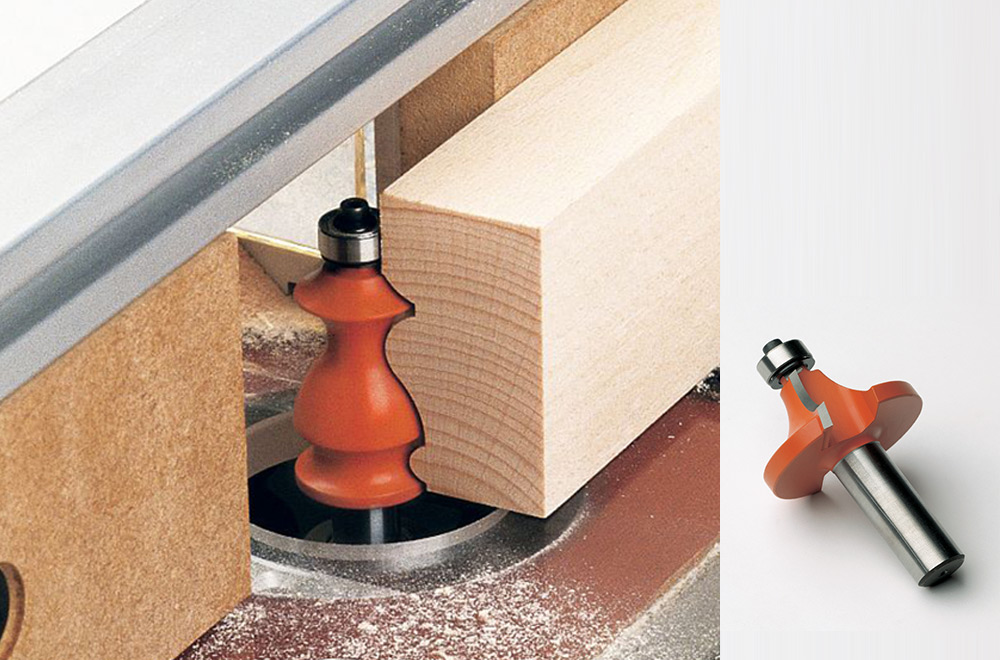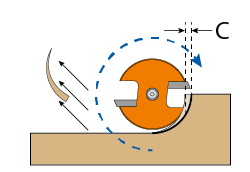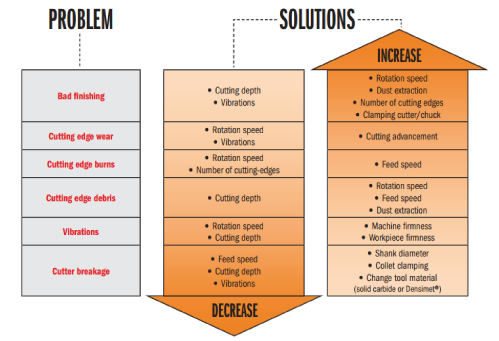What are the best conditions for routing?

We have prepared some answers, insight and advice on the basis of your frequently asked questions, which will help you to choose the best conditions for your routing and woodworking.
What is the best equipment I can use?
Using brand new equipment of high quality is not the same as using outdated machinery! It is important to understand that vibration is the direct result of wear and tear, which can lead to a poor quality finish. Feed rate should be chosen in order to dampen vibration, and quite often, higher feed rates are associated with better finishing results.
What factors influence the performance of the bit I am using?
Many factors affect performance and the ultimate finish of the workpiece: the power of the collet chuck, the rigidity and eccentricity of the couplings, conditions and quality of the collets, reverse locking system, sharpened tool edge, the dust-collection system in use and even the relative humidity of the workplace environment.
What bit should I use?
The number of cutting edges as well as the cutting diameter of your bit significantly affect work parameters. In general, the more cutting edges and the wider the blade diameter, the higher the feed rate.
What is the cutting depth I hope to carry out?
The depth of cut is usually influenced by the design and length of your bit and its teeth. If you need to route deeper you have to decrease the feed speed and conversely increase the speed when performing a shallow cut.
What speed should I choose when routing?
By increasing the rpm of the tool you increase the quality of cut. However, at the same time the friction between the tool and the workpiece increases. This results in a shorter tool life. You should ideally choose the lowest possible speed while maintaining the required quality of cut.
What edge finish am I looking to achieve?
Coarse routing and fine routing are definitely not the same thing! You need to figure out what is more important: quality or quantity. In order to prolong the life of your cutting tool, it's best to choose the highest feed rate possible best suited to achieve the finish you want.
What materials am I working with?
Wood is a great example of a natural fibre composite. It consists of natural fibre material, elastic and flexible cells (cellulose), which are interconnected by a very firm material called lignin. Lignin is an anisotropic material, meaning its direction-dependent and changes its direction along the piece (knag). How many types of wood and wooden materials are you familiar with? Remember that no two pieces of wood are the same. In reality, two various pieces of wood with the same parameters can result in two completely different outcomes.
The feed speed is dependent on several factors, as listed above – and that’s just a few examples. It is important to consider all factors and then select the optimum feed speed ideal for your tool and the quality of your work.
IGM and CMT are synonyms for high-quality router bits.
When looking for a router bit, select the manufacturer with care.
I understand everything ... but where do I start?
The best way to find the ideal setup is to, step by step, test out your tool by changing the speed and movement up to the point where the results are ideal and suggest comfortable and clean work!
One way to find the ideal setup is to use callipers and measure the chip size after routing. The rule of thumb is simple and goes as follows: when the chip is too thick, the surface will be poorly surfaced, while when the chip is too thin, the life of your tool is shortened as the edge is wearing out fast. The friction and heat cause more damage to the edges of your tool than the removal of material.
The next time you adjust your routing conditions, do not forget to properly assess the requirements of your tool and to review the strain of your tool by checking the chip size. Now just try to set the conditions of your routing according to the mentioned factors.
Then, using the formulas below, continue adjusting the appropriate speed. These will help you to achieve great results faster and more efficiently and provide you with vital information useful for routing.



Back to what's new